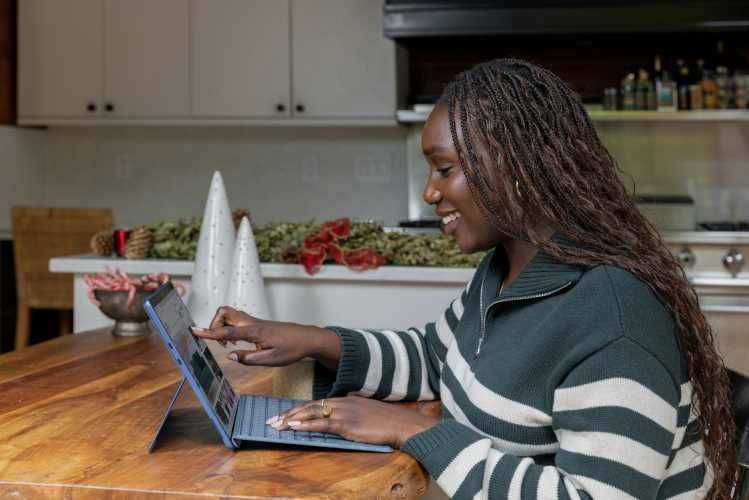Online Courses
Blended Learning – Everything You Need to Know
Learn what blended learning is, its benefits, and the blended learning strategies to incorporate into your own practice.
Author
Mighty Networks
Last Updated
August 14, 2025

Blended learning can be an incredible experience for both teachers and students alike, helping you scale your teaching efforts while improving learning outcomes.
In this article, we’ll introduce you to what blended learning is, some examples, and some blended learning strategies to incorporate into your own practice.
What is blended learning?
Blended learning is an approach to teaching that mixes in-person, classroom teaching with supplemental e-learning, whether it’s through online discussions, extra synchronous or asynchronous classes, or other project-based work. Blended learning brings the best of traditional education–the energy and focus of a live classroom experience–together with the flexibility and accessibility of e-learning.

Throughout its history, the term “Blended learning” has been used to describe 1. Combining delivery media, 2. Combining instructional methods, and 3. Mixing online and in-person instruction–but now we mostly use the term to describe a mix of in-person and online instruction.¹
Even in the traditional classroom, blended learning is becoming the rule rather than the exception. A recent study of UK universities showed that 69% of them were planning to implement blended learning, while 82% said they are seeing a higher demand for blended learning. And in 2021 (during the pandemic), 60% of all US college students were taking at least one course online. Online education is estimated to reach $257.7 billion in value by 2027.
Although we associate a burst in online learning with the pandemic, universities and colleges have supported online learning for decades–especially supplemental learning in online forums or projects. This has been facilitated by ed-tech tools and online learning software like Blackboard and Canvas.
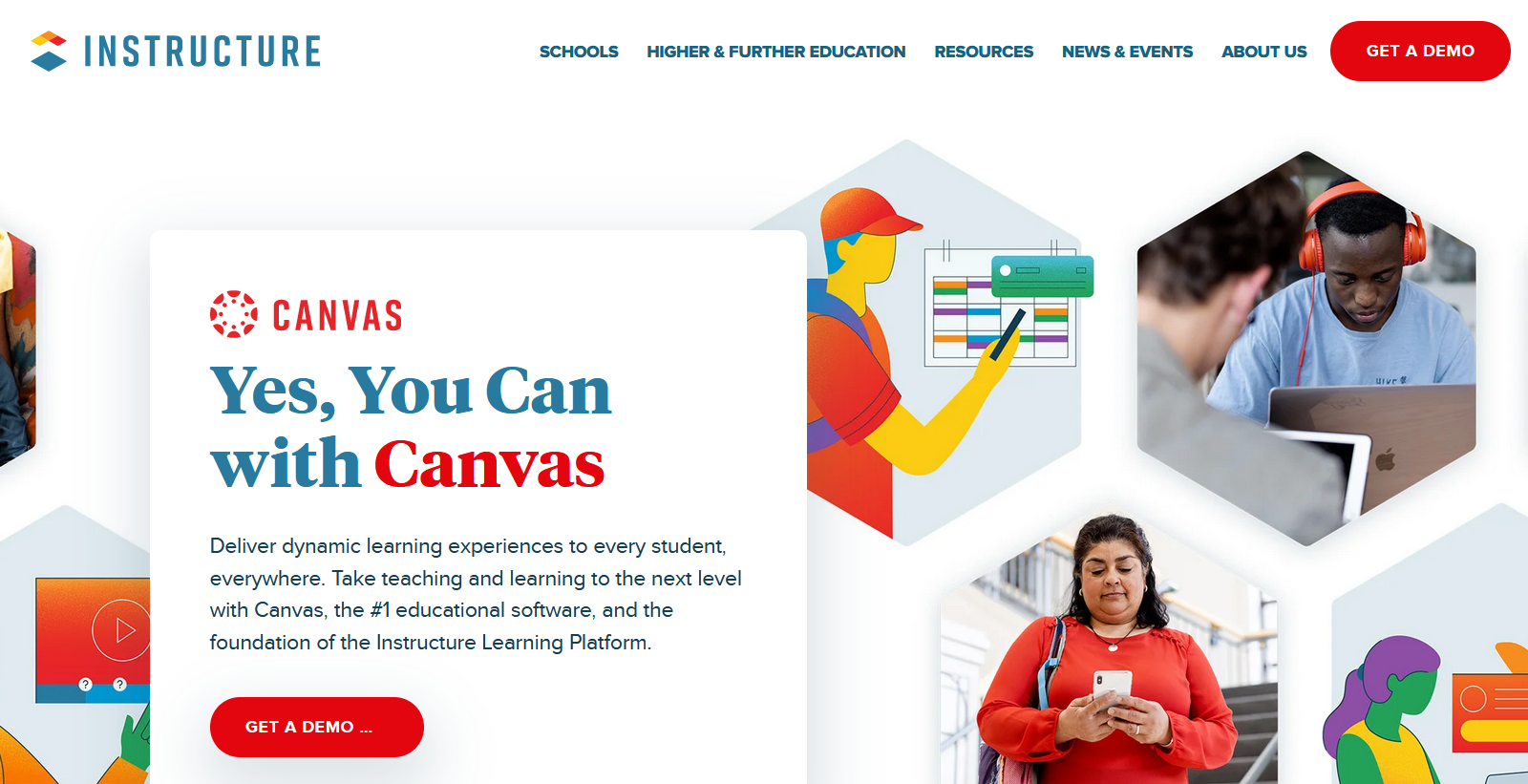
Access to online learning has become so widespread that in 2023 the University of California decided to close a loophole in its system–it had so many courses available from online providers that students could get an online degree for way cheaper (they brought in a residency requirement).
But blended learning isn’t just for higher ed or K-12. For every kind of training that exists, whether it’s corporate training or starting an online course business, blended learning has the potential to mix the very best of in-person learning (the engagement, the topic flexibility, the conversation) with the best of online learning (the accessibility).
Blended learning can refer to:
Activity-level blending: When a single learning activity takes place in-person and online.
Course-level blending: When a course includes in-person and online material.
Program-level blending: Blending occurs across a program of study, but possibly not within specific courses or activities.
¹See the discussion in Chapter 1 of Curtis J. Bonk and Charles R. Graham, The Handbook of Blended Learning: Global Perspectives, Local Designs (John Wiley & Sons, 2005).
Here are a few blended learning statistics
83% of university students find online learning more convenient (Erudera).
82% of all university and college students want at least some of their learning to be online (and 41% want completely online) (UNESCO).
A survey of new college students in 2022 found that 27% of them preferred blended learning and 29% preferred completely online–a shift down from the pandemic numbers, but still significant (New America).
There are 2.79 million U.S. post-secondary students doing their degrees online (NCES).
From 2019-2020, the pandemic caused post-secondary online learning to jump from 37% to 74%.
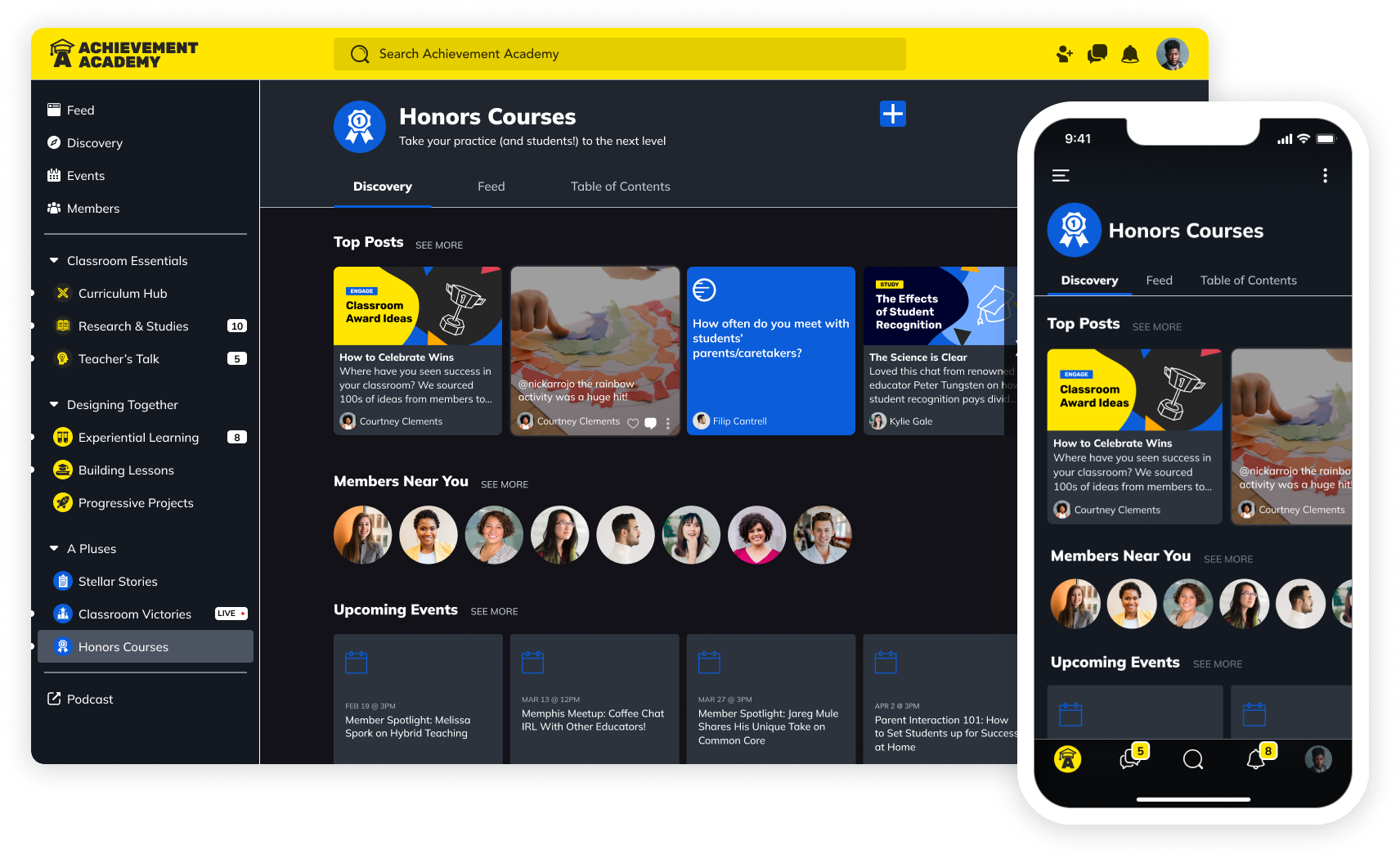
Blended learning systems
Blended learning can only happen because of the rise of blended learning systems, the technological requirements for teaching at-scale online. Blended learning systems are always evolving and growing, with new capabilities all the time.
For example, Mighty Co-Host™ can create course outlines using AI. These capabilities will keep evolving and changing blended learning as the tech evolves.
Blended learning vs hybrid learning: What’s the difference?
The terms “blended learning” and “hybrid learning” are often used interchangeably. But sometimes, “hybrid” refers to a mixture of in-person and remote learners in the same classroom (sort of the way we describe a hybrid event)--while blended learning predominately describes a mixture of online and in-person learning for each learner.
Benefits of blended learning
There are a lot of benefits of online learning, and the simplest way to describe these is that it offers the best of both worlds! Since both in-person and virtual learning have positives, blended learning lets students get the value of each approach and mitigate the negatives.
It’s this balance that makes up the sweet spot for blended learning. For example, asynchronous online learning can be lonely. But blended learning lets you get together with fellow students once in a while to make friends!
A New America survey of blended learning in community colleges found that the top reasons students loved blended learning were: the option to set flexible schedules, the chance to make friends in class, a feeling of higher-quality education, a reduction in commute time, and a reason to get out of the house.
Benefits of blended learning–associated with in-person learning
Flexibility: Online learning lets learners learn from the comfort of their own home, and asynchronous online learning can be done at a learner’s convenience. This can make learning possible for people with other commitments to balance (e.g. the parent working a job already).
Accessibility: Blended learning can be more accessible for different learning types–letting learners go at their own pace.
Eco-friendly: No need for classrooms (or heating/cooling or electricity). Online learning is eco-friendly and cost-effective.
Scalable: Even blended learning offers scale. For example, if you were teaching 3 intro classes, you could combine these all into a single online discussion group.
Easier than ever: Tech for e-learning is constantly getting better and more accessible.
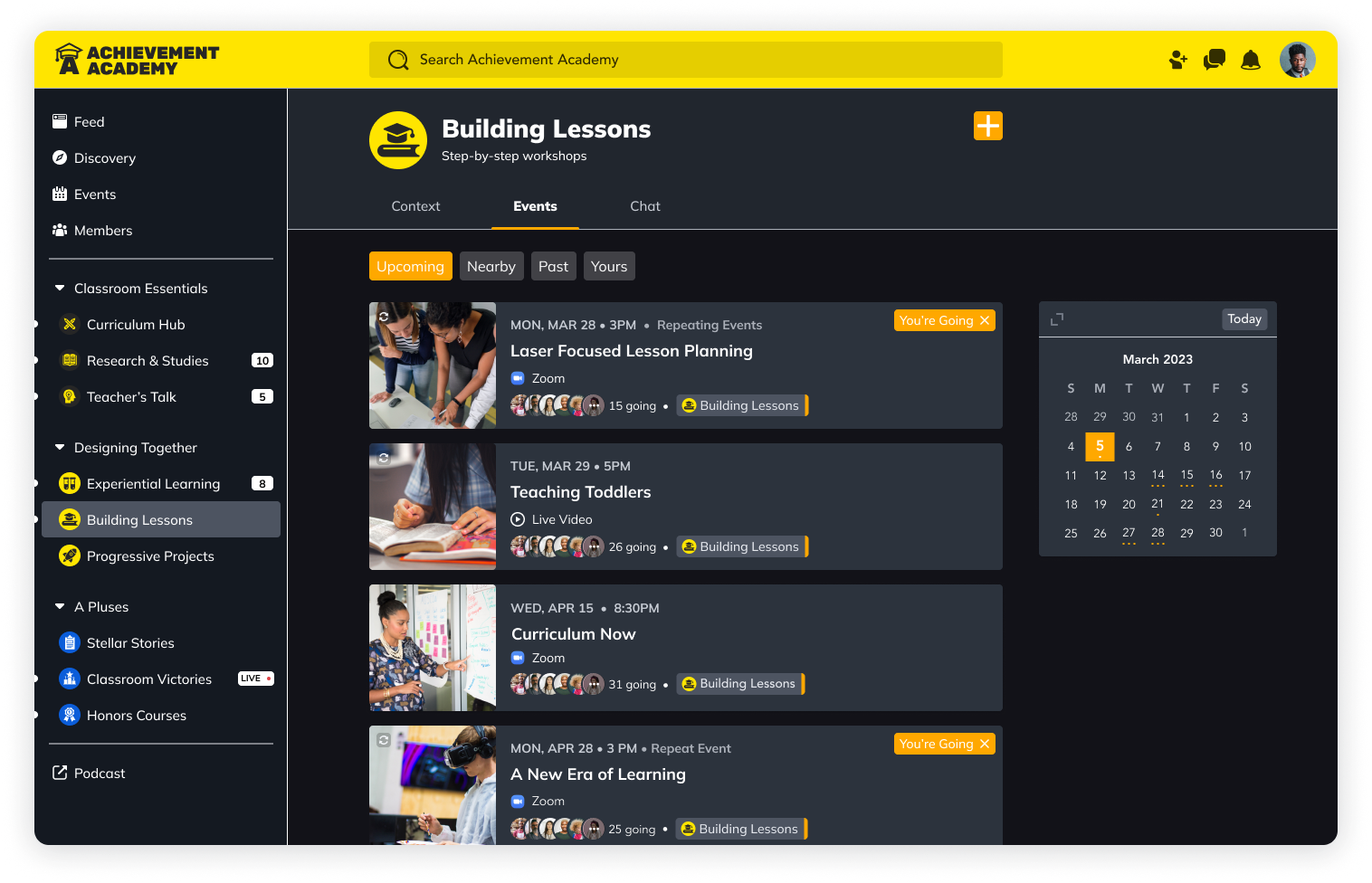
Benefits of blended learning–associated with in-person learning
Engaging: If students struggle to pay attention online, live learning can improve this.
Forming connections: Students gathering in-class can form meaningful friendships and networks.
Flexibility: In-class learning offers flexibility of a different kind, the teacher can adapt the class discussions and material as they engage with the room.
Blended learning examples
A college instructor adds a mandatory virtual component to their curriculum, for example, engaging in a virtual discussion room, writing blog posts about the reading, or working on an asynchronous group project with class members.
Walmart offers the One Global Walmart Academy which mixes live and virtual learning opportunities for its 2.3 million associates.
Amazon built classrooms into their fulfillment centers to teach employees skills–both those relevant to their work at Amazon and those not. They offer upskilling into some in-demand careers.
Many executive MBA programs mix live and virtual instruction to make up for the students’ busy schedules–many are working full-time while completing their MBAs.
The U.S. Government’s Federal Cyber Defense Skilling Academy upskills federal employees through a mix of live and virtual training.
The University of Phoenix is famous for online learning, but students can also take in-person classes, making for a blended learning degree.
Blended e-learning
There’s another option for blended learning and this is blended e-learning. Instead of mixing in-person with virtual learning, blended e-learning mixes elements of synchronous and asynchronous learning on a virtual platform.
So, for example, you could have an asynchronous course that’s supported by virtual events, live chats, and discussion groups in real-time. Or, you could have a course that’s taught live through a livestreaming function, but the recording is available after along with an asynchronous discussion board.
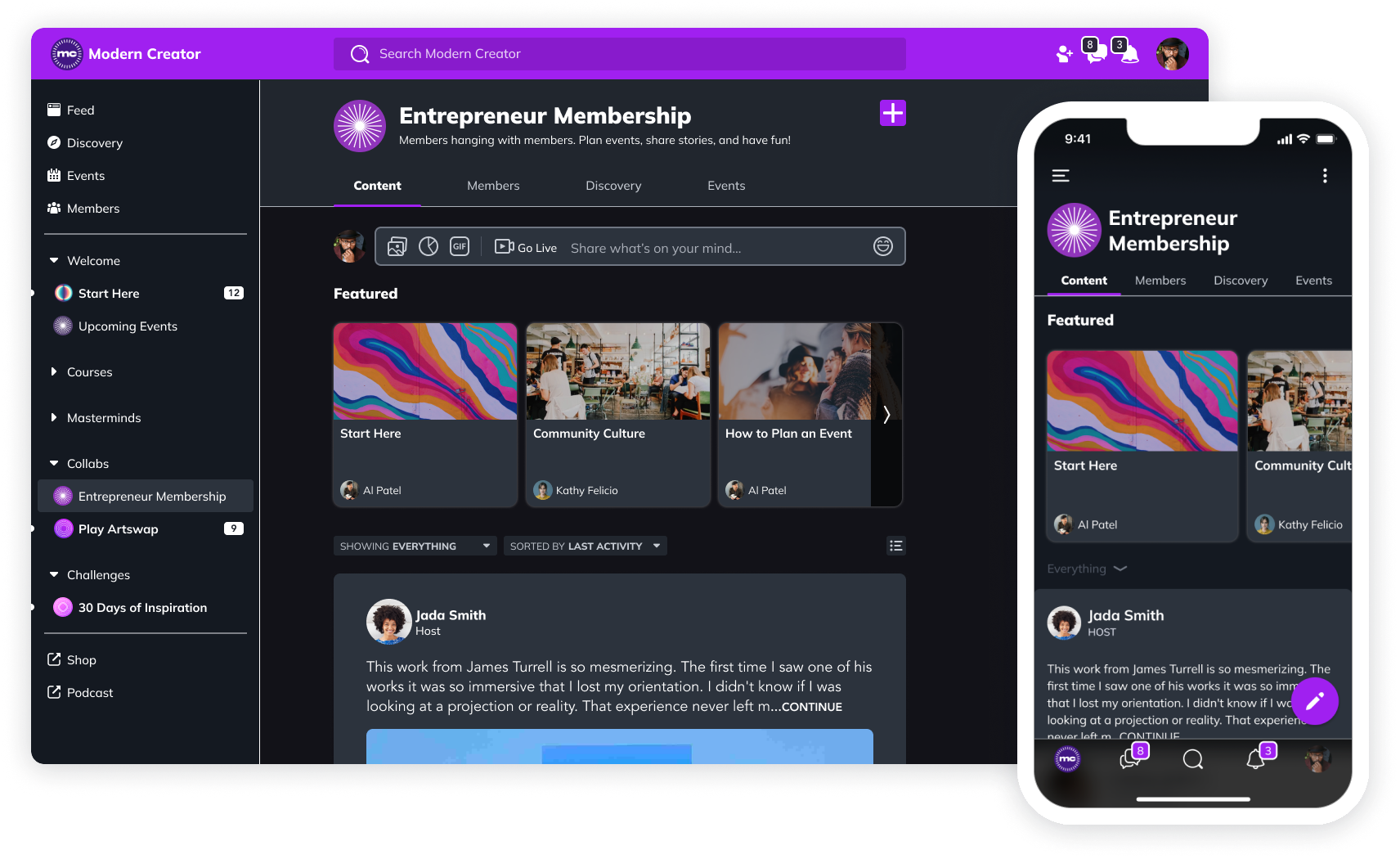
Like blended learning, blended e-learning brings a lot of the positives of an in-person classroom to e-learning. You can benefit from the energy of live sessions, from the discussions and conversations that happen in real-time, or the adaptability you can bring to students’ questions.
The difference is, the entire thing happens on a virtual platform. You get all the accessibility and all the flexibility together.
Blended learning strategies
1. Try a flipped classroom
One common approach to blended learning is called a flipped classroom. In this model, students engage with readings or lectures at home, and then classroom time can focus on discussions or engagement.
This can be tough to succeed within K-12 education, although it is possible (younger learners often need parents’ support). But the approach is used widely in higher ed and is similar to the “tutorial” model of education–which has been around for centuries (it’s the foundation of the Oxbridge system).
2. Let the learning objectives guide
Blending learning should be guided by what helps you get to your learning objectives the best. This might seem obvious, but you can use each of the advantages of live and online learning to meet different learning objectives. A flipped classroom is a great example of this.
3. Choose great tech
The tech you choose to facilitate blended learning will impact its success. Obviously, whatever features you’re looking for in a blended learning platform need to be robust and functioning. They should play well together and be easy for the students to both use and access.
Here are a few tips:
Avoid complicated tech stacks. Try to find solutions that let you add the blended learning features you want without mixing and matching software–which creates more complications.
Check with IT. If your institution has an in-house IT team, see if you have existing solutions.
Think about interoperability–if it needs to be, make sure your blended learning tech jives with existing learning and student management systems.
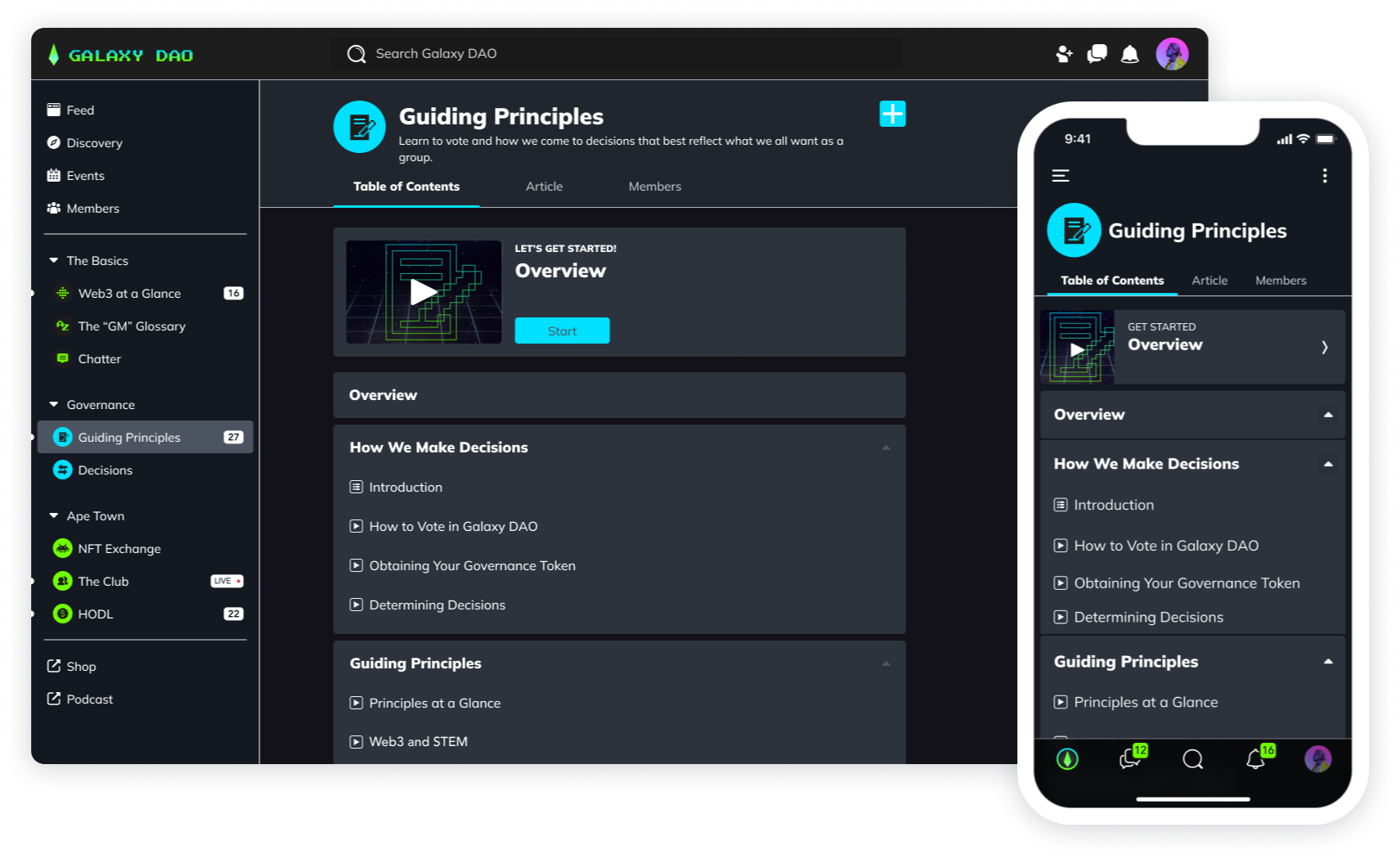
4. Make the online count
One of the quickest ways for blended learning to fail is by putting all the weight on the in-person sessions and making online participation optional. The online portion of blended learning shouldn’t feel like an add-on or an afterthought. Make it count and assign real learning objectives to online participation.
For example, having an optional discussion space is a recipe for low uptake. Try building 10 discussion reflections and 10 responses to others’ reflections into your curriculum (e.g. worth 1% each for 20% of the final grade). By putting skin in the game for blended learning, you increase the chances it will work well.
5. Don’t replicate the traditional classroom online
Blended learning presents a nearly limitless range of learning possibilities. Replicating the activities of a traditional classroom online can just be sad.
For example, a lecture is fine.
But what about having students watch a documentary together while chatting virtually?
Or applying a theory to a popular film?
Or trying an online video game that fits with course themes?
Or building their own blog or website?
Or posting on social media about course themes?
The sky’s the limit, so be creative about using online formats.
6. Don’t make synchronous and asynchronous the division
It’s easy to think that in-class needs to be synchronous and online should be asynchronous, but that’s not the case. Online activities can be synchronous, through the use of live video, chat, messaging, etc. And in-person activities don’t necessarily need to be simultaneous.
If you're trying to choose between leading with asynchronous or synchronous, this chart can help you think through the types of learners each serves best:
If Yes... | If No... | |
|---|---|---|
Are your students self-directed and autonomous? | Try Asynchronous | Try Synchronous |
Does your material ever change? | Try Synchronous | Try Asynchronous |
Do students require live feedback and support? | Try Synchronous | Try Asynchronous |
Do your students have limitations in joining through a live session, either because of learning style or lifestyle? | Try Asynchronous | Try Synchronous |
Will the students need to workshop ideas, have discussions, or work together? | Try Asynchronous | Try Synchronous |
7. Orient the students
Rather than throw the students at blended learning, host a session in class (even in a computer lab if you have access) to get them started with the online component of the class. Use this opportunity to teach them how to log on to the blended learning platform, how to use different features, and perhaps even do an assignment together.
Familiarity with the platform increases the chances of students getting the most out of it. And technical difficulties are one of the top barriers to blended learning.
8. Read your data
Since blended learning comes on software platforms, you have the unique opportunity to engage with data. These data points can give you useful information about what’s working and what isn’t when it comes to your blended learning implementation.
Check the data often.
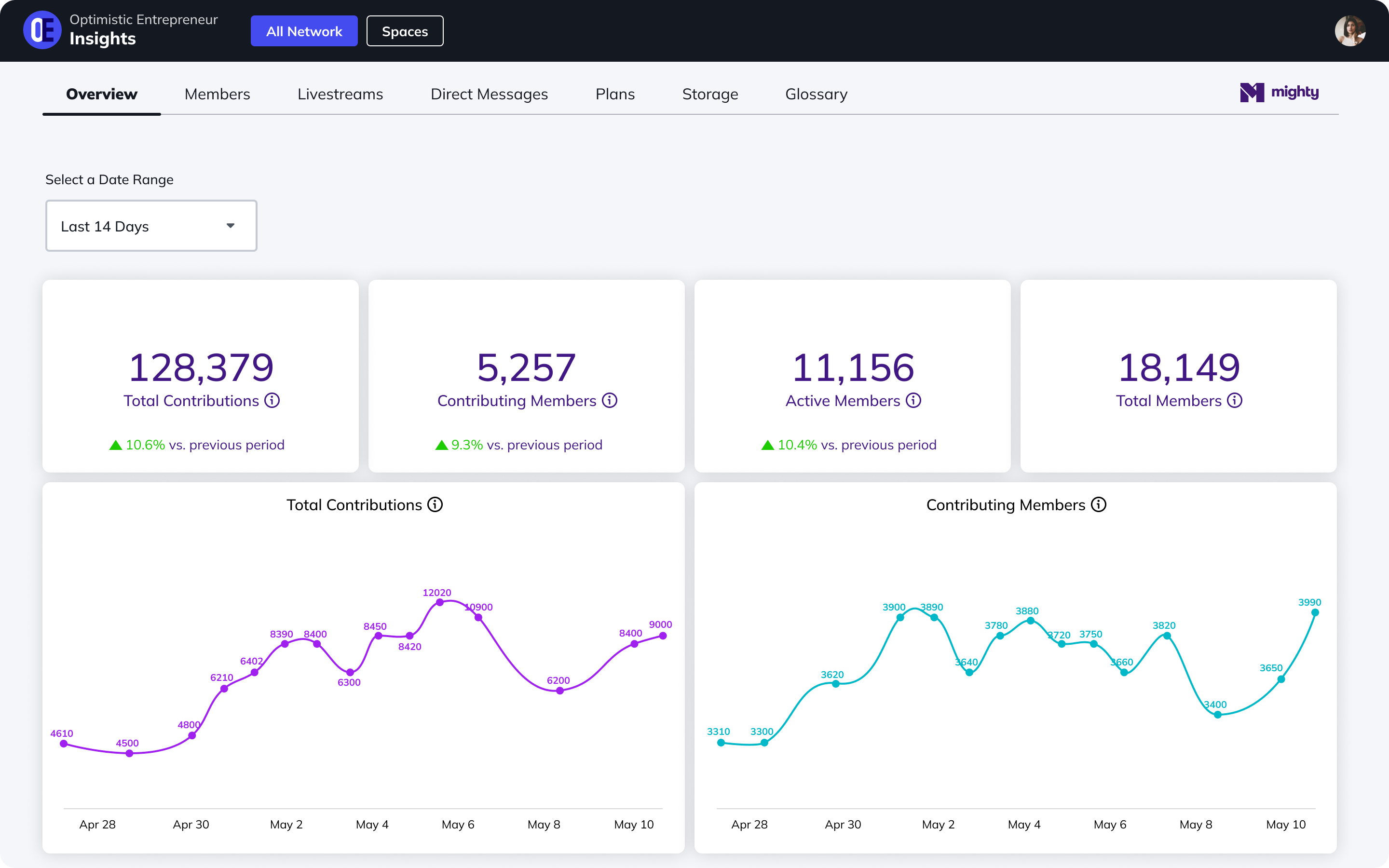
9. Join a community of practice
Adapting blended learning of any kind can be a challenge for the first time. Look for communities of practice where you can share and learn from others who are using blended learning well.

Blended learning platforms
1. Mighty Networks
Mighty Networks is a community and course platform that comes with a powerful toolset for hosting discussions, livestreaming, running live events, and including both synchronous and asynchronous courses.
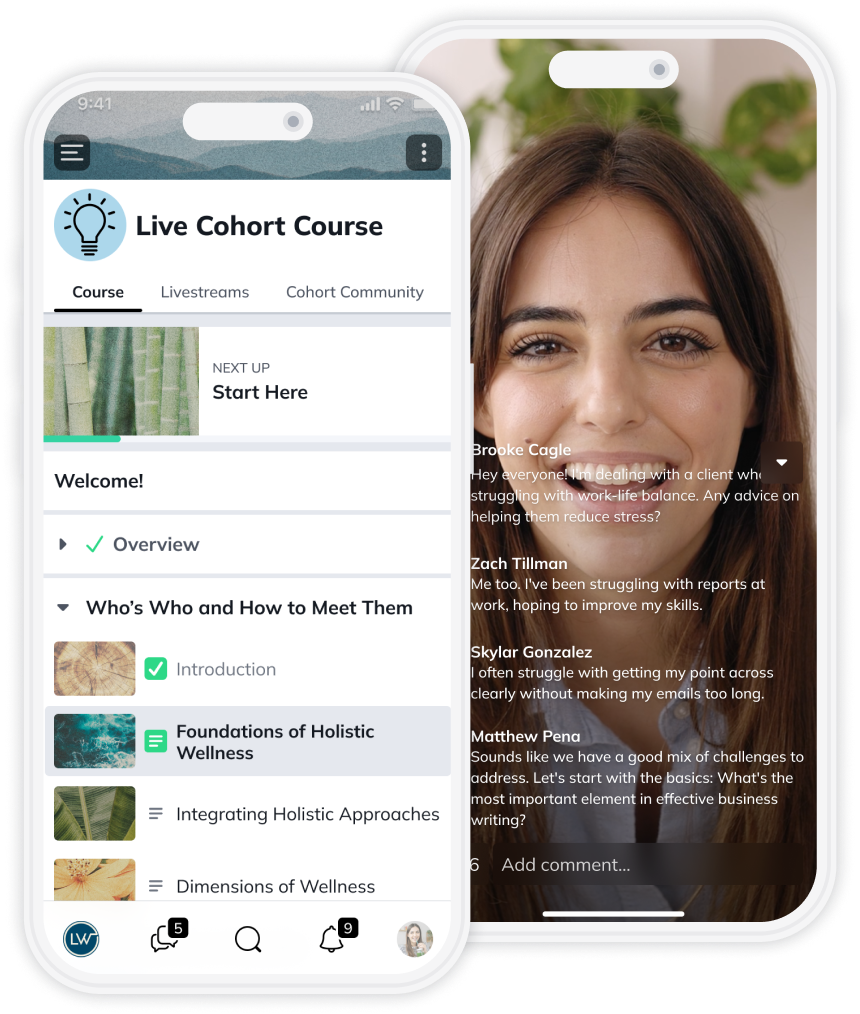
As a blended learning platform, it shines for corporate and brand-related learning–with options for a branded app through Mighty Pro. And for those running an online course or training business, it gives you everything you need for monetization–building packages, managing checkouts, and charging in 135 different currencies.
2. Moodle

Moodle is an institutional learning management system that comes with a lot of different content options as well as a solid set of engagement features for co-learning, things like discussion forums, collaborations, and messaging.
3. Canvas by Instructure
Canvas can be used to create an institutional learning hub, with a powerful LMS, good engagement tools, solid mobile apps (better than Moodle), and Learning Tools Interoperability (LTI) compatibility to work with an institution’s IT system.
4. Blackboard Learn
One of the more common institutional LMS options that has a lot of grading and assignment features included, plus a few good collaboration features (like the discussion board and live meeting features). The dashboard is easy to use for both students and administrators.
Conclusion
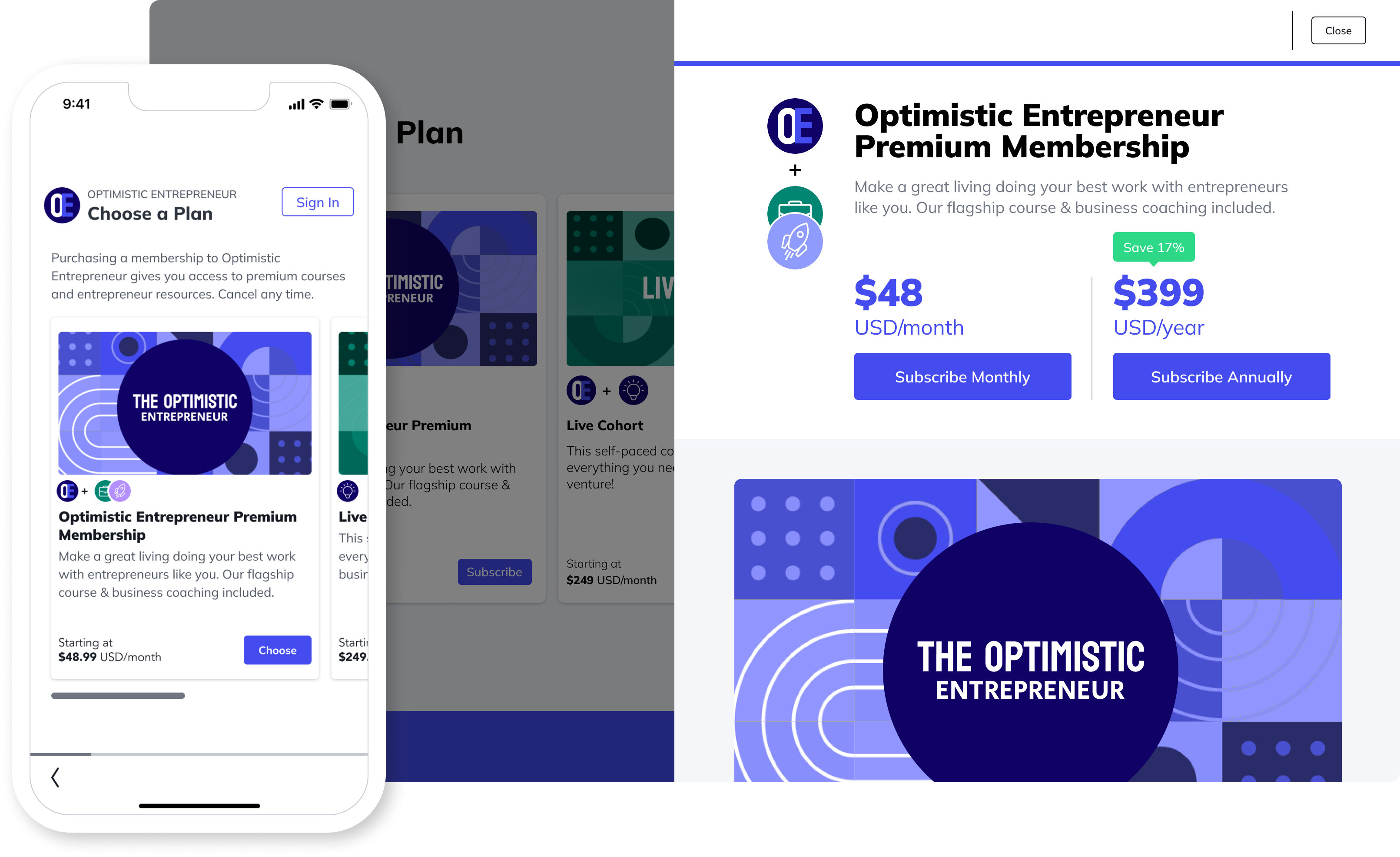
Blended learning can be a challenge to try if it’s your first time. But if done well, it can create fantastic learning opportunities and help you scale your teaching. Hopefully, this guide has you excited about trying blended learning and ready to bring your teaching online!
If you want to experiment with Mighty’s blended learning platform, you can try it free for 14 days–no credit card needed.
Ready to start building your community?
Start a free 14-day trial to explore Mighty—no credit card required.
More like this
Join Mighty Community
Learn the principles of Community Design™ (and see them in action) alongside thousands of creators and entrepreneurs. It's free to join!

Online Courses
Creating a Course
Teaching a Course
Course Platforms
Selling a Course
Communities & Memberships
Community Platforms
Managing a Community
Building a Community
Growing a Community
Monetizing a Community
Content Creation
Creators & Entrepreneurs
Monetization
Content Creation
Starting a Business
Website Builders
Creating & Managing a Website
Events
Event Platforms
Hosting & Marketing Events
Branded Apps
Creating a Mobile App
Coaching Apps
Community Apps
Coaching
Mastermind Groups
Starting a Coaching Business
Coaching Platforms
Filter by Category
Online Courses
Communities & Memberships
Creators & Entrepreneurs
Events
Branded Apps
Coaching
Build a $1 Million Community
This free masterclass went viral—sign up to learn why.



















